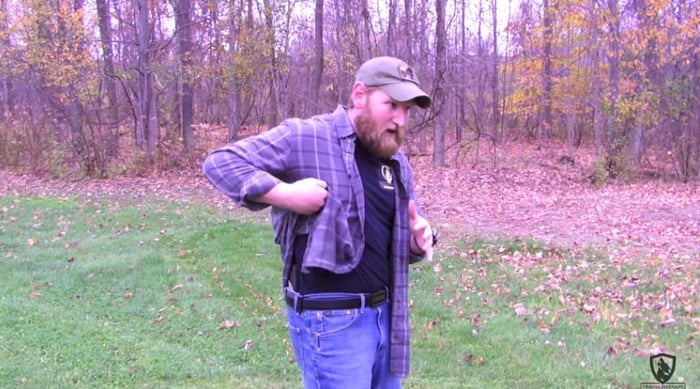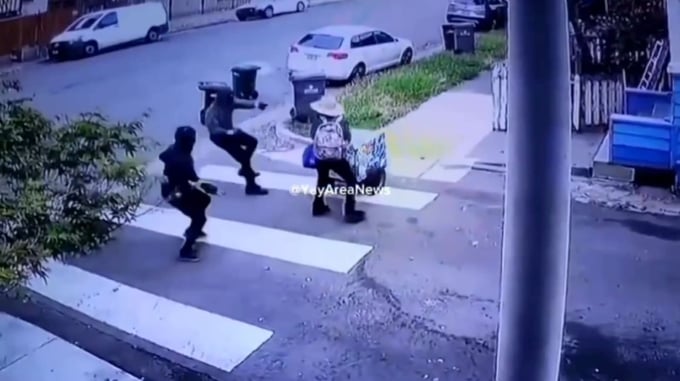By Sam Hooper via TTAG
If you’re going to carry a concealed firearm, it’s necessary to practice the defensive use of a handgun. Simply punching holes in the 10 ring at the range isn’t enough; you need to work on the skills that you’ll need in the real world.
What that entails for most people is drawing a firearm from under a cover garment of some sort, as most people who carry on a regular basis conceal rather than open carry. Therefore, it’s necessary that you practice clearing that cover garment as quickly and efficiently as possible.
Some people use a two-layered garment system for concealed carry, often an untucked button-up shirt or vest over a t-shirt. Some wear the outer layer that’s fastened. Some don’t. If you wear business or professional dress, then it will probably be a suit jacket.
Unfastened layers are more efficient for quick access, though concealment can become more tenuous on a windy day. Some folks fashion a modesty flap of sorts to help keep the garment in place; a small leather strap or bit of fishing line is a common solution.
The most common technique to clear the cover garment is to sweep the strong side hand backward, clearing the cover fully. Then, bring the gun hand to the body and ride the thumb down into a shooting grip.
A good idea is to practice one-handed. While less efficient than using two hands, the truth is that you may only have the use of one hand while drawing from concealment. Most defensive gun uses occur at close range and rarely involve a picture-perfect stance. Therefore, make sure to practice using the strong-side hand only, either exclusively or in addition to your two-handed draw.
A best practice is to index the tip of the strong-side hand thumb against the body as you clear the cover garment. While you can use the support hand to hold the cover garment in place, you should be able to use the strong side hand alone to clear cover.
Many people will also carry under an untucked shirt such as a t-shirt, polo or buttoned shirt. In this instance a lifting motion is required along with a sweep to clear the garment, moving the fabric up and to the back. A best practice is to index the thumb against the body, sliding into a shooting grip.
Appendix carriers can favor a two-handed system, wherein the weak hand lifts and the strong hand gets immediately onto the grip. While efficient, and certainly allowing for a fast draw, also has the drawback of requiring use of both hands.
You don’t need to practice only at the range; the draw stroke along with the first shot can be practiced as a dry-fire drill. In fact, you should probably put in more practice time with the draw stroke and first shot in dry fire training, at least in terms of sheer repetitions. Spending 15 minutes a day can give you the requisite muscle memory in a hurry.
Make sure to start any new practice routine slowly. Surety and economy of motion are preferable to speed in the beginning. Remember, slow is smooth and smooth is fast. Speed will come later.




![[VIDEO] Armed Robber Shot And Killed By Quick-Thinking Concealed Carrier](https://imagedelivery.net/sbm_lYeJbALkepJgtmRD5w/concealednation.org/2019/08/ScreenHunter_2568-Aug.-28-16.20-1.jpg/w=728,h=381)







![[VIDEO] Springfield Armory XD-S® MOD.2 3.3″ SINGLE STACK 9MM](https://imagedelivery.net/sbm_lYeJbALkepJgtmRD5w/concealednation.org/2019/03/ScreenHunter_2113-Mar.-21-01.04.jpg/w=728,h=381)

